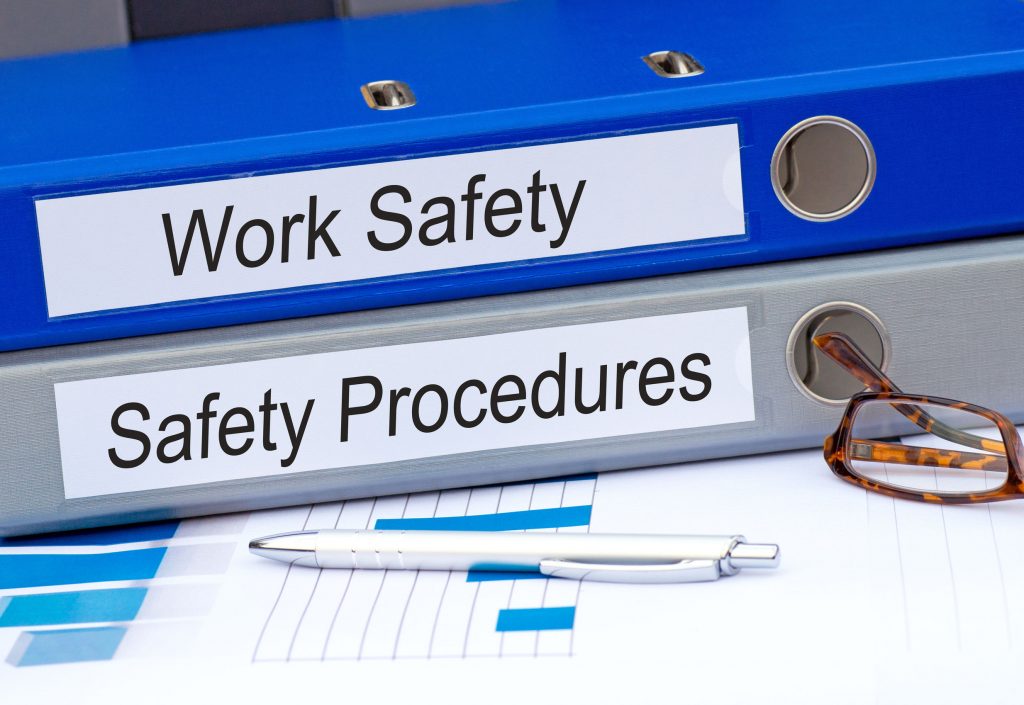As an employer, it’s vital you address any health and safety issues at work as quickly as possible.
Here are our top health and safety tips to help your small and medium-sized business more easily tackle compliance in the workplace:
Weigh up the health and safety risks
Carry out a risk assessment to identify the risks of someone being harmed by your business.
Make sure your assessment’s realistic. In other words, as well as identifying possible risks think about how likely they are to happen and what the consequences would be if they did.
You will then be able to make an informed decision about which risks to focus on and urgently address.
Look at what steps you can take to reduce risks to an acceptable ‘reasonably practicable’ level.
Consider how effective those steps are likely to be.

Find out what staff think
You are legally required to consult with your staff on health and safety.
But don’t just think of it as a necessary box-ticking exercise. Talking to employees can really help make your workplace safer and more productive.
Find out more about the way your staff work. It will help you identify health and safety tips in the workplace and the best ways of dealing with them.
Keep written records
Smaller organisations typically don’t need a long and complicated Health & Safety policy. So, don’t get too bogged down in paperwork.
But you should write down your health and safety policy – even if it’s very short and simple.
Keep a record of all your risk assessments. You also need to record all the Health & Safety measures your organisation takes.A written record is important because if an incident occurs you can show the steps you’ve taken to protect workers.
An accident book should also be kept. Make a detailed note of all accidents and near misses.
Underline Health & Safety’s importance
There is little point in having a Health & Safety policy if no one understands it.
Make sure everyone knows:
- How to carry out their job safely.
- What needs to be done to minimise the risks.
Simple health and safety workshops or training sessions may help ensure staff understand the role they play in creating a healthy and safe workplace.
Keep a tidy workplace
One easy health and safety tip for the office and a simple way to reduce the risk of incidents is to keep your office, workshop or industrial unit clean and tidy.
Reduce the risk of slips, trips and falls, by clearing away clutter and making sure no unnecessary items are left on floors.
Maintain equipment & buildings
Make sure all your equipment is regularly serviced and that you promptly carry out any necessary repairs.
Log all your electrical appliances including when last tested.
If you have regular set times to check the condition of equipment and buildings then you might spot areas in need of attention before real problems occur.
Keep a well-stocked first aid box
However small your business, you need to make sure you have a properly stocked first aid box.
Have someone monitor its contents to make sure it always contains the necessary first aid items.
Depending on your organisation’s size, you may also need to have staff on site with first aid training.
Make sure their first aid qualification is kept up-to-date.
Create a maintenance timetable to make sure everything including your premises remains in good condition.
Have regular fire drills
Regular fire drills are essential no matter how seemingly annoying and counter-productive.
You should carry out drills at least once a year.
Make sure:
- Staff know exactly what to do in the event of a fire.
- You have a fire safety policy.
- You have an emergency evacuation plan and that all staff are aware of it.
- Fire exits and routes to exits are kept clear at all times.
Identify vulnerable workers
You need to be aware of any staff who could be considered vulnerable workers.
If any are disabled, pregnant or suffer long-term health problems, it is a good idea to carry out a specific risk assessment to make sure their Health & Safety’s being properly protected. For example, a pregnant worker should not be doing any heavy lifting.
Very young workers may also need close supervision.

Look out for stress
As an employer, you must do everything you possibly can to help reduce stress in your employees that results from their work.
Key steps to managing stress are:
- Identify and monitor the causes of stress.
- Where possible take action to reduce it.
Stress is one of the major reasons people take time off work. So, taking steps to make your workplace happier and more relaxed is critical.
Need Help?
If you want to make sure you are fully health and safety compliant and your risk assessments are up-to-date, speak with one of our experienced consultants for practical advice and guidance.





